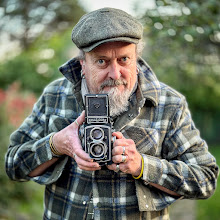I'm always being asked about some of my techniques, many of them have been in
Model Rail magazine, the frequently copied original home of Workbench features. So here goes an old one for free - PVA water!
Many of my layouts have a water feature of some type, I'm not sure why, but possibly living near the murky Solent for much of my life has had a bearing.
 |
| Muddy waters lap the wharf at Cement Quay - click to enlarge! |
Over the years I've seen many layouts, many of which simply use deep layers of varnish to represent water; the problem is that varnish especially when thick looks more like bitter ale than muddy tidal water which is normally full of silt and all sorts of other horrors. The only water I've ever seen in real life that's clear is a mountain stream, out of the tap and the clear waters of the Mediterranean.
For muddy water this doesn’t really work, as well as taking years to dry, stinking the house out and inevitably attracting a layer of dust and cat fur before it sets, and of course it looks a reddish brown colour like that beer just mentioned. I like beer, but tend to prefer it in a pint glass, and ideally not for too long.
 |
Cheers! Beer looks nothing like sea or river water does it? Unless
you've had too many of these of course! |
So, how to create that murky water seen in Britain’s rivers and shore lines? For this I cannot take credit, for it’s important and gentlemanly to mention that a few years ago Allan Downs explained in one of his articles for Model Rail of a happy accident when he poured PVA into a ‘to be’ river. In frustration he left it overnight with a view of sorting it out at a later stage. The following day he noticed that it had dried clear, had texture and a soft shine, Bingo! Happy indeed! This is why it's as importamt to make mistakes as to achieve success sometimes.
I’ve since used Allan’s happy accident on all of my layouts with watery bits, and you’ll be pleased to know that it’s as easy as falling off a log into real water.
Firstly prepare your area to be watered so it’s nice and smooth, joins will show through, so a scrim of plaster or some kind of filler works a treat. Then decide what colour the water should be, which in the UK is mostly a grey/brown colour, maybe with a touch of green especially if an inland waterway like a canal. Never use BLUE, that’s just something seen on postcards, children’s books or that Mediterranean holiday. In the UK we only see ‘blue’ water when the sky is blue and you’re looking out to sea. Greys, browns and greens are far better, but always choose muted tones. Any old paint will do, but it’s probably best to use one which dries waterproof to avoid the paint lifting off at the next stage.
 |
| PVA application, be careful to avoid bubbles - click to enlarge! |
Next choose your PVA, any brand will do, but waterproof PVA tends to dry clearer and less milky. With a 1 inch brush, carefully dollop on the glue whilst creating a slight texture, but don’t be too aggressive because that could produce small air bubbles and we don’t want those! Try not to use too much glue, if too thick and can set milky. Repeat once set and many times as you like, though as a rule of thumb 3 or 4 coats is enough.
 |
30 mins of so after the PVA application, note that
it's trying clear - click to enlarge! |
You might like to add the effect of water lilies or weed, quite a neat idea is to do this with a small brush and some green paint, then when dry apply more PVA over the top to encapsulate them. If for some reason you make a mess, don’t worry, just paint your base colour on again and start over. As always look at the real thing to copy, do not rely on imagination.
 |
Paint is captured between layers of PVA to suggest
lillies and weed - click to enlarge! |
Finally if you want a little more shine, Andy York to take it one stage further recommended a very light coat of gloss varnish will give a little more twinkle, and keeping it thin will ensure it dries nice and quickly before the dust or cat settles on it.
So there you go, water the Allan Downes’ way! Thanks Allan!






